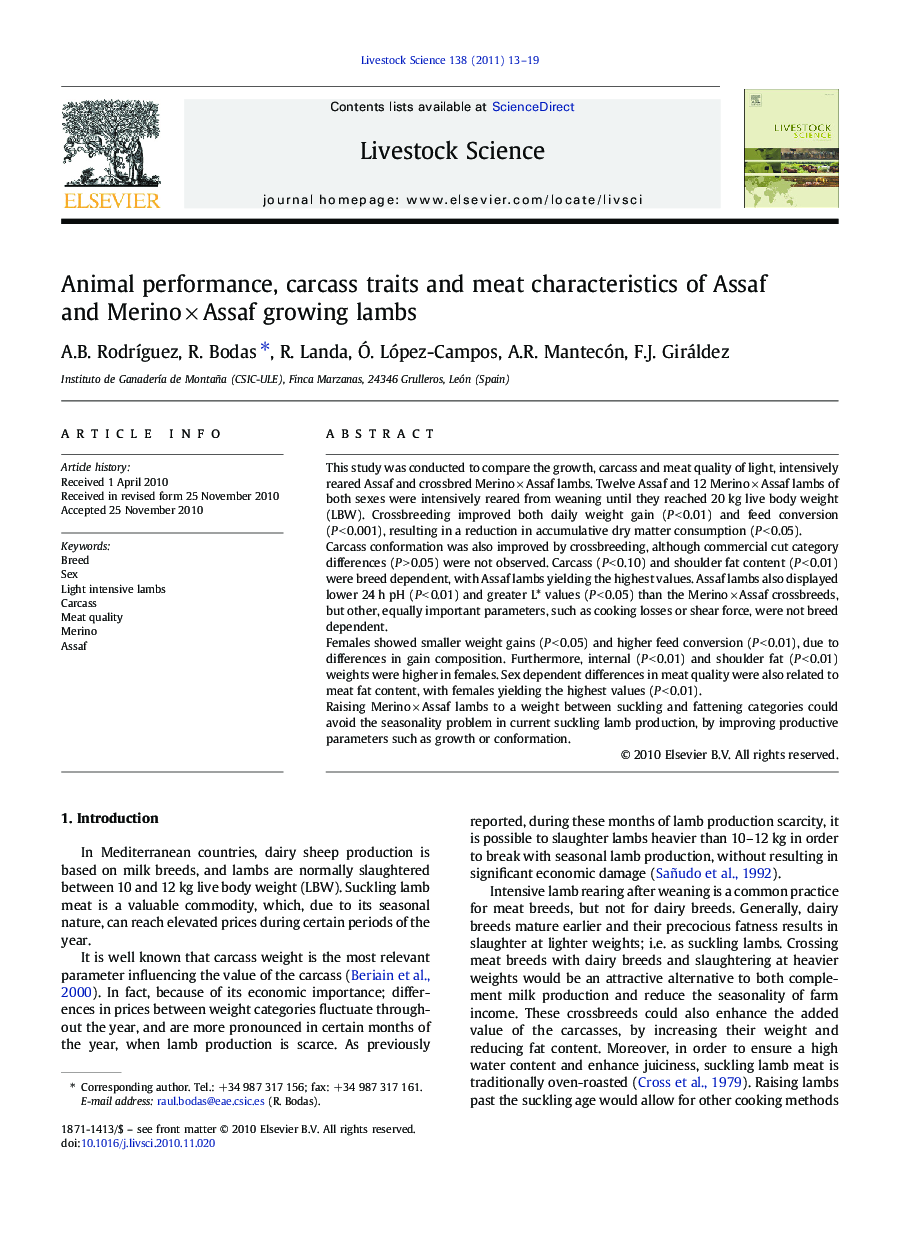| Article ID | Journal | Published Year | Pages | File Type |
|---|---|---|---|---|
| 2447472 | Livestock Science | 2011 | 7 Pages |
This study was conducted to compare the growth, carcass and meat quality of light, intensively reared Assaf and crossbred Merino × Assaf lambs. Twelve Assaf and 12 Merino × Assaf lambs of both sexes were intensively reared from weaning until they reached 20 kg live body weight (LBW). Crossbreeding improved both daily weight gain (P < 0.01) and feed conversion (P < 0.001), resulting in a reduction in accumulative dry matter consumption (P < 0.05).Carcass conformation was also improved by crossbreeding, although commercial cut category differences (P > 0.05) were not observed. Carcass (P < 0.10) and shoulder fat content (P < 0.01) were breed dependent, with Assaf lambs yielding the highest values. Assaf lambs also displayed lower 24 h pH (P < 0.01) and greater L* values (P < 0.05) than the Merino × Assaf crossbreeds, but other, equally important parameters, such as cooking losses or shear force, were not breed dependent.Females showed smaller weight gains (P < 0.05) and higher feed conversion (P < 0.01), due to differences in gain composition. Furthermore, internal (P < 0.01) and shoulder fat (P < 0.01) weights were higher in females. Sex dependent differences in meat quality were also related to meat fat content, with females yielding the highest values (P < 0.01).Raising Merino × Assaf lambs to a weight between suckling and fattening categories could avoid the seasonality problem in current suckling lamb production, by improving productive parameters such as growth or conformation.
